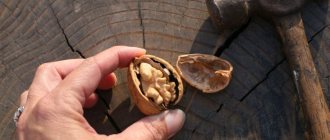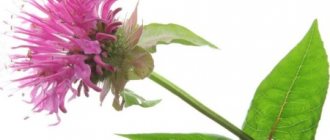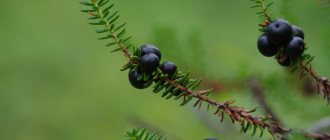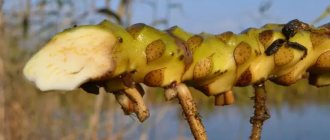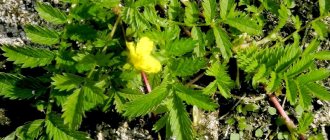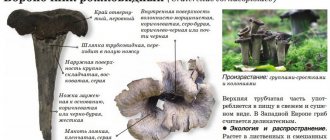Where does it grow?
Chanterelles are easy to recognize among the many gifts of the forest due to their bright orange color. Even inexperienced mushroom pickers can easily find them, and they are immediately noticeable on store shelves.
The distribution area of chanterelles is wide - they can be found both in our country and in Europe. As a rule, most of them are found in shady coniferous forests. They usually grow in flocks during rainy periods. On our website you will find separate material on how to properly collect these mushrooms.
Attention! Edible chanterelles can easily be confused with false chanterelles, so if you do not know them well, it is better to buy them in the store to avoid poisoning.
Description
Content:
- Description
- False chanterelles: how to recognize
- The nutritional value
- Benefits for the body
- Chanterelles for cleansing the body
- Warning
- How to choose the right one when buying
- What to do with chanterelles
Chanterelles are fleshy mushrooms with a pleasant aroma. With their unusual shape they resemble a flower, or as some mushroom pickers say, a golden flower, because they have a unique bright yellow color. It would seem that due to its unusual appearance, this mushroom cannot be confused with others. However, even experienced lovers of “silent hunting” can mistake its poisonous “double” for a fox. But more on that a little later.
Chanterelles are usually small mushrooms, but their sizes may vary on different continents. For example, in Europe and Asia, the average chanterelle is barely larger than the size of a thumb, but in the forests of the eastern United States, these mushrooms can already reach the size of a fist, and in the west of the country - even more. True, gourmets say that European and Asian varieties are tastier and more aromatic.
In our latitudes, chanterelles can be collected from June to October. Most often found in coniferous forests (near pine, but also near birch and oak trees), on sandy and acidic soils. You can count on the most abundant harvests immediately after the rains.
As a rule, these mushrooms grow in the same place for many years. But under one condition: the soil with mycelium was not damaged during the harvesting process.
An interesting feature that even inexperienced mushroom pickers notice: chanterelles are almost never wormy. All this is thanks to chitinmannose contained in mushrooms. Another unique feature of mushrooms is that they can be collected in almost any container (even a bag!), and they still won’t break.
Chemical composition
Chanterelles have a fairly rich composition, which provides them with a wide range of medicinal properties.
First of all, it is worth highlighting chitinmannose - a special substance, a polysaccharide, thanks to which the body is cleansed of parasites.
Chanterelles also contain:
- vitamins A, B, D, E;
- amino acids;
- a nicotinic acid;
- potassium;
- copper;
- zinc;
- iron;
- fiber and many others.
Interesting fact: science does not stand still - scientists from Korea have once again demonstrated this. In 2012, they discovered the presence of acids in chanterelles, which can reduce hunger and help in the process of weight loss.
Calories and nutritional value
Mushrooms are foods with medium calorie content. At the same time, those people for whom every calorie counts should also take into account exactly how the product is prepared in order to understand whether it should be included in the diet menu or not.
For example, 100 grams of fried chanterelles contain about 70 kcal, stewed - about 40, and boiled - about 30.
Pickled and salted mushrooms have very few kilocalories - about 20 per 100 grams.
These gifts of the forest are distinguished by a successful combination of fiber that is beneficial for the human body and a small content of fats and carbohydrates.
Effect of chanterelles on parasites
The mushroom contains a powerful monosaccharide with anthelmintic. It is an analogue of pharmaceutical drugs and does not have a negative effect on the human body. Proof of its effectiveness is that the chanterelle mushroom is not wormy: quinomannosis causes disruption of the parasite’s nervous system, it stops breathing and dies.
Mushrooms have a positive effect on the immune system
The fungus has a similar effect on pests in the human body. Quinomannose also has an effect on the eggs of worms and parasites.
Chanterelles have a positive effect on the immune system due to the large amount of beta-glucans and polysaccharides in their composition. This substance stimulates the production of leukocytes, which counteracts the appearance of parasites and viruses.
Beneficial features
Thanks to their composition, chanterelles can provide considerable assistance to our health:
- promote the removal of worms;
- help in the treatment of sore throat;
- moisturize the mucous membrane of the eyes and improve vision;
- remove harmful substances from the body;
- increase our resistance to adverse external factors;
- strengthen nails and improve hair condition;
- improve the well-being of patients with hepatitis;
- promote good liver function;
- perform antibacterial functions.
What are the benefits of dried chanterelle mushrooms?
Chanterelles (other names for mushrooms are cockerels, or yellow chanterelles) are easy to recognize among other healthy mushrooms. Their cap has an asymmetrical shape of a convex or concave type and, together with the stem, forms a single whole. When pressed, the shade of these yellow mushrooms changes to pale pink. The flesh of cockerels, white with a slight yellowish tint, is quite dense, with a “rubber” structure.
Dried yellow chanterelles are rich in macro- and microelements and other healthy components. That is why the medicinal properties of dry chanterelles are known not only to healers, but also to qualified doctors.
100 g of product contains:
| Macronutrients | Microelements | Vitamins |
| Potassium – 450 mg | Iron – 0.7 mg | Vitamin C – 34 mg |
| Phosphorus – 44 mg | Manganese – 0.41 mg | Vitamins RR, NE – 5 mg |
| Sulfur – 40 mg | Zinc – 0.26 mg | Niacin – 4.9 mg |
| Chlorine – 24 mg | Copper – 290 mcg | Vitamin E – 0.5 mg |
| Magnesium – 7 mg | Fluoride – 55 mcg | Vitamin B2 – 0.35 mg |
| Calcium – 4 mg | Cobalt – 4 mcg | Vitamin B1 – 0.01 mg |
| Sodium – 3 mg | Vitamin A – RE, 142 mcg |
In addition to this pantry of healthy elements, dried chanterelles contain amino and fatty acids, antibiotics, quinomannose, trametonolinic acid, provitamin D2, beta-glucans, mono- and disaccharides, polysaccharide K-10.
The health benefits of dried chanterelles are manifested in a range of effects on the body:
- general strengthening of human health and immune system;
- prevention and treatment of sore throats and colds;
- assistance with cancer;
- removal of worms;
- improving the functioning of the liver and pancreas;
- normalization of the general condition of the body, reduction of painful manifestations of hepatitis C and tuberculosis;
- strengthening the heart muscles, increasing overall muscle tone;
- removal of heavy salts from the body;
- restoration of vision;
- improvement of the general condition of the skin and hair;
- restoration of metabolism and normalization of weight, stabilization of the digestive tract;
- decrease in blood sugar, stabilization of hemoglobin levels.
Important! Despite the abundance of substances beneficial to health in dried chanterelles, you should not consume them without a doctor’s recommendation. Self-medication can be dangerous to health.
Most often, the medicinal properties of dried chanterelle mushrooms are used in the fight against parasites, in the treatment of cancer, liver and pancreas diseases, and for general health support at a high level.
Is it possible for pregnant and lactating women
Although the benefits of chanterelles are obvious to most people, it is better for women during pregnancy or breastfeeding to avoid any mushrooms. The fact is that they, like a sponge, absorb various substances from the soil, including not the most useful ones, especially if they grow near highways or large cities.
During pregnancy you have to be very careful, so it is better to eliminate any risk and, as a last resort, limit yourself to mushrooms that were collected in environmentally friendly places.
When breastfeeding children, it is also better to exclude mushrooms from your diet, not only because of the possible presence of toxins in them, but also because an allergic reaction may occur in a still fragile baby.
How to dry chanterelles in the microwave?
This option is ideal if you plan to dry a small amount of mushrooms. How to properly dry chanterelle mushrooms using a microwave oven? To begin with, the purified product must be placed in an appropriate container and placed in the kitchen machine. At a power of 120-180 W, evaporate the mushrooms so that all the liquid comes out of them. Usually this procedure takes at least 20 minutes. The resulting liquid must be drained and the microwave left open for 10 minutes. After that, load the mushrooms back into the device for 20 minutes, choosing the same power. The procedure is repeated several times with a break of 10 minutes. Let us remind you that the readiness of the product is checked by touch: if the fruit body bends and crumbles only with strong pressure, then the drying process can be considered complete. As it turns out, drying chanterelles is not difficult if you follow certain rules.
At what age can it be given to children?
Chanterelles are quite difficult to digest. Even an adult may have difficulties with this process, let alone children. Therefore, pediatricians do not recommend giving fried or boiled mushrooms to children under 5-6 years of age.
Of course, you can try to treat your child to this product earlier, especially if he asks you about it, but it is better to limit yourself to a couple of mushrooms or one mushroom broth. Children's digestion is not yet ready for such a heavy product, and mushroom poisoning at such a tender age is much more difficult to tolerate.
Contraindications
In addition to the medicinal properties, chanterelle mushrooms also have contraindications for use. Like any other mushrooms, they should not be consumed in large quantities by people with stomach diseases. However, these products are difficult to digest and can cause indigestion or exacerbation of the disease.
Treatment with drugs is prohibited:
- pregnant and lactating women;
- people with intolerance to components;
- with a tendency to upset stool;
- with exacerbation of ulcers, pancreatitis.
Doctors do not recommend giving mushrooms to children under 6 years of age. Treatment with mushroom powder can only be started after consultation with the pediatrician.
Benefits for weight loss
For people who are careful about the composition of their daily diet and who want to lose excess weight, chanterelles are a treasure. After all, they have very few calories, even if we are talking about such a delicious dish as chanterelles with sour cream.
But these mushrooms contain a lot of fiber and protein, which helps build muscle mass. Chanterelles also promote quick satiety and help you avoid feeling hungry for longer: what could be better when you are on a strict diet?
Also, these mushrooms speed up metabolism, remove toxins from the body and replenish the lack of vitamins and microelements that can occur due to food restrictions.
Benefits of dried mushrooms
It is believed that dried chanterelles are able to retain most of the beneficial substances that are found in fresh ones. In addition, drying is a great way to preserve mushroom harvest for a long time. In this case, you still have the opportunity to use mushrooms both in soups and in independent dishes, while the same pickling significantly narrows the choice of culinary solutions.
Attention! If you do not dry mushrooms at home, but buy them, then purchase chanterelles in stores that responsibly select suppliers. Try not to buy forest products by hand to avoid possible poisoning.
How to choose the right one when buying
When choosing chanterelles in the supermarket, it is important to pay attention to the pulp. It should be dense, without rotten areas or damage. Also, healthy mushrooms should not have a slimy layer or dark spots. The correct chanterelle is a lamellar mushroom of golden or apricot color with a pleasant aroma. Store the sealed package in the refrigerator for no longer than a week.
If you are not very well versed in mushrooms, there is no need to buy them at the market or “from hand”. In addition, it is important to remember that mushrooms easily absorb toxins and “chemicals” of any origin. Therefore, chanterelles from a contaminated area can be poisonous to the body.
Methods of use in folk medicine
Chanterelles have found use not only in cooking, but also in some traditional medicine recipes. For example, Chinese healers often use them as medicine because they believe that these mushrooms help people fight dangerous viruses.
Most often, they are made into powder or infusion at home.
Infusion
Chanterelle infusion is especially effective in the fight against worms. In order to make a healing drink, you need to take fresh mushrooms and chop them finely. Then they are filled with medical alcohol or vodka and left to age for three weeks in a dark and cool place.
When the infusion is ready, the liquid must be separated from the mushroom mass and taken one teaspoon per day for 4-6 weeks.
Powder
To make the powder, you need to thoroughly grind the already dry mushrooms using a mortar or blender.
The powder, like the infusion, helps rid the body of worms, but, unlike the infusion, it is stored much longer. It should be taken one teaspoon per day on an empty stomach, washed down with plenty of water.
Treatment with dried chanterelles
In order to dry cockerels, you can use a long or quick method:
- In the first case, mushrooms are strung on a rope, like bagels, and hung for 1 - 2 weeks near the stove or on the window. You can also leave them on a cabinet in a ventilated area. But this will take even longer - about 2 - 3 weeks;
- A second, easier drying method is to place clean, dried mushrooms in the oven. The temperature in it should not exceed 40 °C, and the residence time of the raw materials is from 1.5 to 3 hours.
Next, the dried roosters should be broken into small pieces and ground in a blender (mortar, coffee grinder) to a powder. It will be useful to store the resulting product in tightly closed glass or ceramic jars in a dark, cool place out of the reach of children.
Not only dried chanterelles ground into powder are used as medicine, but also healthy infusions and decoctions of fresh mushroom raw materials. Other methods will not bring any effect, since when heated to 60°C or freezing, as well as when interacting with salt, all the beneficial properties of chanterelles are lost.
Cooking tips
In cooking, there are many interesting recipes with chanterelles, which you can find on our website.
Now I would like to dwell only on general recommendations that will help you in the process of preparing them.
- Try to use only fresh chanterelles: ideally, no more than 10 hours should pass after they have been cut.
- To eliminate the risk of poisoning, mushrooms must be boiled for 15 minutes, drained, rinsed, and only then begin cooking.
- In order to preserve the characteristic shade of chanterelles, you can add lemon juice or vinegar to them.
- Chanterelles go well with spices such as basil, rosemary and cardamom.
Drying chanterelles in the oven
You can dry chanterelle mushrooms using the oven - how to do it? Many mushroom pickers note that this option is very convenient, since you do not need to wait several days for the fruiting bodies to dry. So, the prepared chanterelles are laid out on a baking sheet covered with parchment paper (or foil). Do not try to place all the fruiting bodies at once; divide them into several portions.
Place the baking sheet with the prepared ingredients into the oven, leaving the door slightly ajar. Thanks to this, excess moisture will evaporate, and the drying process itself will go faster. Initially, the oven temperature should be set to +50°. After a couple of hours, it is recommended to increase the temperature by 10°. After about an hour, you need to remove the mushrooms and check for doneness. In particular, drying time depends on several factors: the age and size of the fruiting bodies, as well as their number and weather conditions during harvest. As you can see, drying chanterelles in the oven is much faster, but do not overdry them.
Is it possible to eat raw chanterelles?
In our culinary tradition, mushrooms are usually heat-treated before serving. On the one hand, this reduces the risk of poisoning with harmful substances that mushrooms can absorb from the soil, and on the other hand, it significantly improves the taste of dishes.
Theoretically, a raw mushroom can be eaten if it grew in an environmentally friendly area. In some countries they are eaten in this form. True, the taste of the mushroom will be quite specific, it will be tougher than boiled or fried, and it will be much more difficult for the stomach to digest it.
Therefore, I advise you to enjoy this delicacy using time-tested recipes.
How to choose and store correctly
In order to collect a decent harvest of chanterelles, it is worth going to the forest in the second half of summer. These mushrooms can appear until October, weather permitting.
Due to their characteristic shade, they are difficult to confuse with other mushrooms. Most often, the danger is the false chanterelle, but it is either much brighter or paler than the real one, and has an unpleasant smell and taste.
If you do not have the opportunity to immediately prepare the entire harvest of mushrooms, then it is best to dry or freeze them.
You can also learn about the medicinal properties of this forest plant from the following video.

